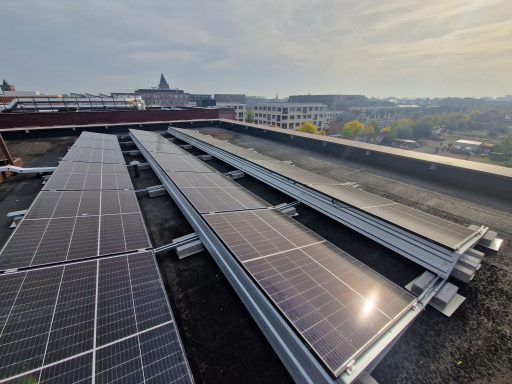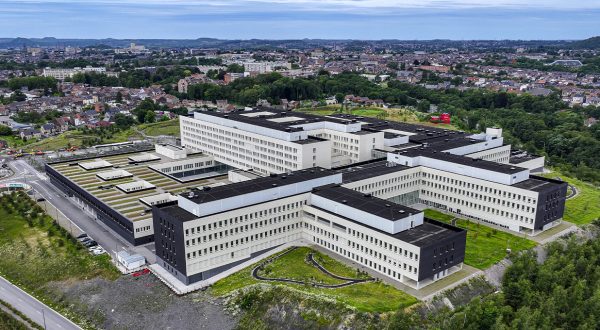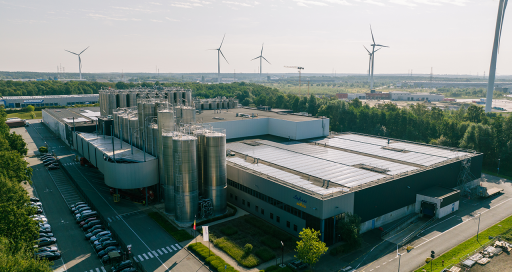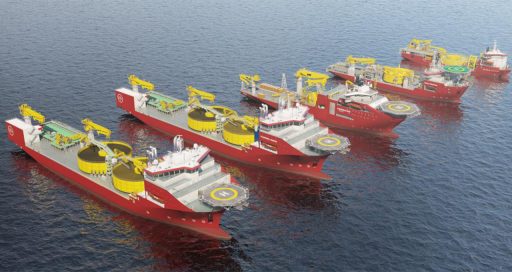In a first for France, the VINCI Energies regional headquarters in Lille will power its electrical appliances directly from a solar production system installed on its roof. The availability of direct current (DC) removes the need for alternating current (AC), improving energy efficiency and reducing the use of natural resources.

Until now, the different roles of alternating current and direct current were clearly defined: the former used for energy transmission and distribution to homes for heating, lighting and cooking; the latter for everything battery-powered – laptops, mobile phones, electric cars, etc.
The situation changed in late 2023, when WAVE, the VINCI Energies regional headquarters in Lille, showed that it was possible to do without the AC power supply network. This was a first in France and the shared achievement of several VINCI Energies Building Solutions business units: Cegelec Nord Grands Projets (design), Delporte (implementation), Lesot (solar panels) et Smart Building Energies (extension of the WAVE management platform).
“This solution improves energy efficiency by 20% to 30% and reduces the volume of copper used by up to 50%”
Together, they designed and implemented a solution to power electrical appliances directly from the building’s own solar production system. The installation comprises solar panels on the roof, a half-floor of offices supplied with direct current (for computer equipment and lighting), sockets in meeting rooms, and a storage battery. There is no alternating current, no inverter and no rectifier*.
Energy and resource savings
This first for France came about in answer to a simple question: given that all these appliances (lights, computers, monitors, telephones, electric vehicles, etc.) are powered by direct current, and that the WAVE building produces direct current from its solar panels, why use an alternating-current network, with the conversions, wasted energy, and far higher consumption that come with it?
By eliminating the double conversion of solar panel output from DC to AC and then back to DC at the point of use (laptop, phone, light fitting, charging station, etc.), according to Eric Ammeux, Business Unit Manager at Cegelec Nord Grands Projets, “This solution improves energy efficiency by 20% to 30%.”
He adds that “It also preserves natural resources by reducing the volume of copper used by up to 50%, because less equipment and cabling is required.” A direct-current installation requires just two copper wires, rather than the three or four needed for alternating current. With this system, the part of WAVE equipped with direct current is autonomous and consumes zero energy from the Enedis network.
Building on the success of WAVE in Lille, VINCI Energies is developing other similar projects (see box). This confirms that while the use of direct current remains marginal, it seems set to steadily increase. Its benefits are clear in terms of energy transition, especially to solar and wind power.
Project for Schneider Electric in Grenoble
First Lille, now Grenoble. There, VINCI Energies is developing a project similar to that created for the WAVE building in northern France. A shade canopy for Schneider Electric, covered with solar panels and connected directly to charging stations using direct current, is nearing completion. “Other similar projects are also in the design phase with some of the Group’s internal and external customers,” says Eric Ammeux, Business Unit Manager at Cegelec Nord Grands Projets.
Current War
The “Current War” between AC and DC has a long history. It began in the United States toward the end of the 19th century, with Nikola Tesla, the champion of alternating current, emerging victorious over Thomas Edison, the chief proponent of direct current. According to Jean-Luc Thomas, a professor at the National Conservatory of Arts and Crafts in Paris,(1) this victory was largely due to the fact that “At that time, the transformers required to adapt voltage levels for the transmission and distribution of power over long distances using alternating current had no direct-current equivalent”. But this was not quite the end, and Edison had his posthumous revenge almost a century later, with the advent in the 1990s of power electronics able to adapt the voltage of direct current and transmit it over long distances. This is now the predominant technology for the long-distance transmission of high-voltage electricity. So, is this a surrender or merely a ceasefire? Direct current, which still has a weak market share, is expected to gain ground gradually, because while it facilitates energy transition, in particular to solar and wind power, we are not about to abruptly abandon a hundred years’ worth of infrastructure developed around alternating current.
*Rectifiers use a series of semiconducting diodes to convert alternating current (AC) into direct current (DC).
10/17/2024





